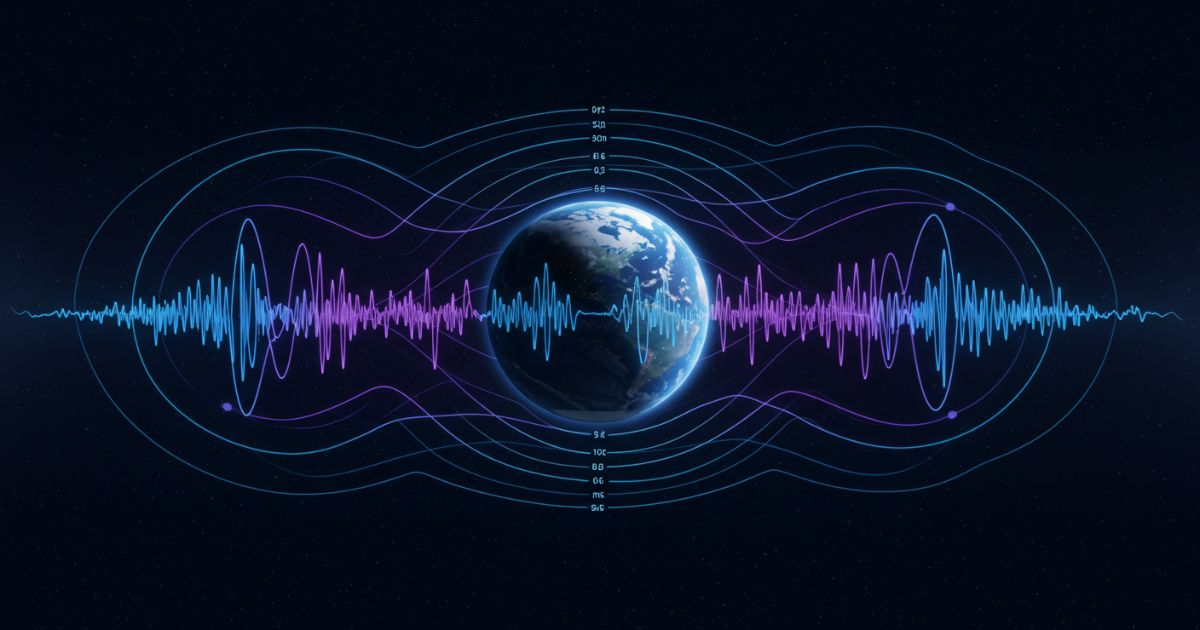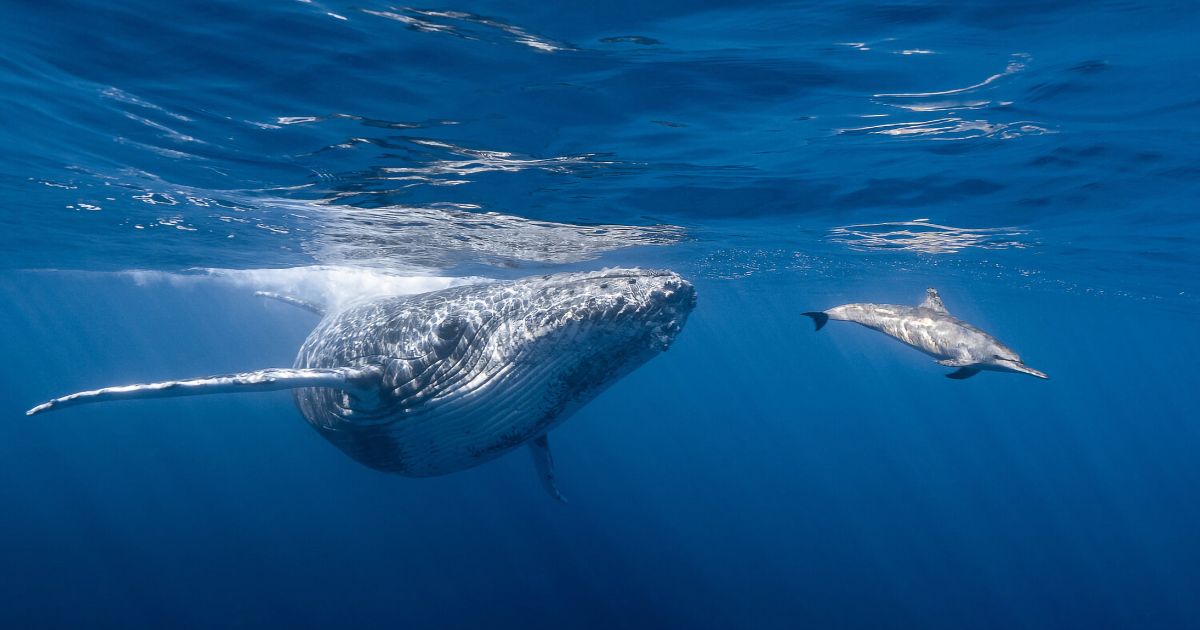The world is full of surprising facts, hidden stories, and little-known details that can make you see things in a whole new way. Whether it’s a quirky science discovery, an unusual historical event, or a mind-blowing statistic, general knowledge treasures help us understand the world better—and make life a little more interesting.
In this article, we’ve gathered 22 captivating general knowledge treasures that are sure to spark your curiosity, give you fun conversation starters, and keep your brain buzzing with new ideas.
22 Captivating General Knowledge Treasures
1. Schumann Resonances: Earth’s Natural Pulse

Our planet hums with an invisible electromagnetic rhythm known as Schumann resonances. Discovered in 1952 by physicist Winfried Schumann, these ultra-low-frequency waves circle between Earth’s surface and the ionosphere at about 7.83 Hz—coincidentally similar to human brainwave patterns during relaxation. This persistent planetary heartbeat influences lightning activity and may even affect animal navigation. The next time you feel at ease in nature, you might be in sync with Earth’s natural pulse.
2. Eternal Honey: Nature’s Unspoiled Treat

Archaeologists discovered pots of honey in ancient Egyptian tombs that were still edible after more than 3,000 years. Honey’s chemical composition—low moisture, high acidity, and abundant natural sugars—prevents the growth of bacteria and microorganisms. Sealed properly, it never truly spoils. This remarkable longevity has made honey both a culinary delight and a symbol of preservation across cultures, reminding us that sometimes the simplest natural substances hold extraordinary powers.
3. Berries Versus Bananas: Botanical Surprises
In botanical terms, bananas qualify as berries, while strawberries do not. True berries develop from a single ovary with multiple seeds embedded in the flesh—like bananas, grapes, and tomatoes. Strawberries form from a flower with various ovaries, making them aggregate fruits, not berries. This botanical quirk highlights the fascinating complexity behind everyday fruits and encourages us to question assumptions about the foods we eat.
4. Ancient Academia: Oxford Versus the Aztecs

The University of Oxford began teaching as early as 1096 and was well established by 1167. Remarkably, this makes it older than the Aztec Empire, which thrived from the early 14th century until 1521. While Oxford has endured for nearly a millennium, the Aztec capital of Tenochtitlán rose and fell within just a few centuries. This timeline twist invites us to reflect on the varied lifespans of civilizations and institutions alike.
5. Cube-Shaped Wildlife: Wombat Wonders
Wombats, native to Australia, produce cube-shaped feces—an unusual adaptation that prevents droppings from rolling away on sloped surfaces. Scientists believe the shape results from a unique digestive process and the elasticity of varying intestinal tissues. By staking their territory with these neat cubes, wombats ensure that their scent markers stay in place, an ingenious solution to communication in rugged terrains.
6. Stars Versus Trees: A Cosmic Comparison
There are more trees on Earth—an estimated 3.04 trillion—than stars in the Milky Way, which number between 100 and 400 billion. This staggering fact underscores both the incredible vitality of our planet’s ecosystems and the vastness of the cosmos. While we gaze upward at the night sky, it’s humbling to realize that the forests under our feet are, in sheer numbers, more abundant than the glittering stars above.
7. Cleopatra’s Timeline: Bridging Eras
Cleopatra VII, the last active ruler of Ptolemaic Egypt, lived closer in time to the first moon landing (1969) than to the construction of the Great Pyramid of Giza (around 2560 BC). This 2,000-year gap between the pyramids and Cleopatra, compared to just 2,000 years between her and Apollo 11, reshapes our perception of ancient history and reminds us how timelines can blur our sense of chronological distance.
8. Seasonal Expansion: The Eiffel Tower’s Stretch
The Eiffel Tower can expand and contract by up to 15 centimeters (approximately 6 inches) depending on the temperature. Metal expands when heated and contracts when cooled, so on hot summer days, Paris’s iconic landmark actually becomes taller. This thermal expansion effect is a practical demonstration of introductory physics at work on a grand scale, visible to millions of visitors each year.
9. Triple Hearts: Inside the Octopus
Octopuses boast three hearts—two branchial hearts that pump blood to each of the gills, and a third systemic heart that circulates oxygenated blood to the rest of the body. With blue, copper-based blood that transports oxygen efficiently in cold, low-oxygen environments, octopuses exemplify evolutionary ingenuity in the deep sea. These complex creatures challenge our understanding of intelligence and adaptation in marine life.
10. The Blackbuck: Speed’s Unsung Hero
While cheetahs claim the title of fastest land animals, the blackbuck antelope (Antilope cervicapra) ranks among the swiftest ungulates, capable of reaching speeds up to 80 kilometers per hour (50 mph). Native to India, blackbucks use their incredible bursts of speed and agility to evade predators in open grasslands. Their aerodynamic bodies and powerful limbs make them marvels of natural engineering.
11. Shakespeare’s Vocabulary Innovation
William Shakespeare coined or popularized over 1,700 words in the English language, including famous terms like “bedazzled,” “lonely,” and “majestic.” Through inventive combinations of prefixes, suffixes, and root words, he enriched the English vocabulary and paved the way for expressive modern literature. His linguistic creativity reminds us that language itself is a living, evolving tapestry woven by countless voices across time.
12. The Great Wall Myth: Space Visibility

Contrary to popular belief, the Great Wall of China is not visible to the naked eye from space. Astronauts report that while specific human-made structures can be seen under ideal lighting and atmospheric conditions, the Great Wall’s narrow width and soil coloration make it blend with the surrounding landscape. This enduring myth highlights how legends can outshine reality in our collective imagination.
13. Venusian Days: A Solar Mystery
A single day on Venus—the time it takes for the planet to complete one full rotation on its axis—lasts 243 Earth days, longer than its 225-day orbit around the Sun. Furthermore, Venus rotates in the opposite direction of most planets, causing the Sun to rise in the west and set in the east. These bizarre celestial mechanics continue to intrigue astronomers and space enthusiasts alike.
14. Genetic Kinship: Humans and Bananas
Humans share approximately 50% of their DNA with bananas, underscoring the deep genetic connections among all living organisms. While half our genes govern complex systems like brains and immune responses, many basic cellular functions—such as energy production and cell division—use similar genetic blueprints across species. This shared heritage reminds us that life on Earth is woven from common molecular threads.
15. Cosmic Cocktails: Alcohol in Space
A massive cloud of alcohol—specifically ethyl alcohol—drifts through the Milky Way near the constellation Aquila. Containing enough alcohol to fill 400 trillion trillion pints of beer, this interstellar cloud spans over 1,000 light-years. While it’s far too diffuse to get anyone tipsy, the discovery of complex organic molecules in space fuels theories about the origins of life and the chemistry brewing among the stars.
16. Dolphin Dialects: Underwater Names

Research shows that dolphins use unique signature whistles—akin to names—to identify and call to one another. Each dolphin develops an individualized whistle early in life and responds when another uses its specific call. This sophisticated vocal behavior suggests high levels of social intelligence and communication, offering insights into the evolution of language and cooperative societies in the animal kingdom.
17. Earth’s Cold Record: The Frozen Frontier
The lowest natural temperature ever recorded on Earth was -89.2°C (-128.6°F) at the Soviet Union’s Vostok Station in Antarctica on July 21, 1983. This extreme chill occurs under clear skies and calm winds, allowing heat to radiate away from the surface. Studying such frigid conditions helps scientists understand climate patterns, ice sheet dynamics, and the limits of life in extreme environments.
18. The Briefest Conflict: 38-Minute War
The Anglo-Zanzibar War of August 27, 1896, holds the record for the shortest war in history, lasting between 38 and 45 minutes. Triggered by a succession dispute in the Sultanate of Zanzibar, British naval forces swiftly bombarded the palace after the new sultan refused to step down. The conflict’s brevity underscores how geopolitical tensions can erupt and conclude almost instantly under overwhelming force.
19. Lightning Bread: Energizing Bolts
A single bolt of lightning can contain up to one billion joules of energy—enough to toast roughly 100,000 slices of bread. Lightning results from imbalances between storm clouds and the ground, creating massive electrical discharges. While harnessing such raw power remains the stuff of science fiction, this comparison offers a vivid sense of nature’s electrifying might.
20. Eleven Time Zones: The Russian Sprawl
Spanning eleven time zones and more than 17 million square kilometers, Russia is the largest country by land area on Earth. From Kaliningrad in the west to Kamchatka in the east, its vast expanse encompasses tundra, taiga, steppe, and desert. Navigating such geographic diversity highlights the challenges of governance, transportation, and cultural exchange across immense distances.
21. Neutron Star: Heaviest Spoonful
Neutron stars pack more mass than the Sun into a sphere just 20 kilometers across, creating densities so extreme that a single teaspoon of their material would weigh about six billion tons on Earth. Born from supernova explosions, these stellar remnants challenge physics with gravity so intense that matter exists in a form unknown on our planet. They’re cosmic laboratories for exploring fundamental forces.
22. Feline Vocalists: Cats’ Sound Palette
Domestic cats can produce over 100 distinct vocalizations, ranging from the familiar meow and purr to trills, chirps, and growls. This extensive repertoire evolved to communicate subtly with humans and other animals. Unlike most wild feline species, cats tailor their vocal signals to interact with people, making them one of the most vocally versatile mammals in our homes.
Conclusion
From the hum of Earth’s electromagnetic heartbeat to the secret names dolphins use underwater, these 22 general knowledge treasures reveal the astonishing complexity of our world and beyond. Whether you’re a trivia enthusiast or simply love learning, these facts remind us that curiosity is the spark that drives discovery. Keep exploring, questioning, and sharing—there’s always more to uncover in the grand tapestry of knowledge!
Learn More: 18 Essential General Knowledge Gems to Elevate Your Mind







